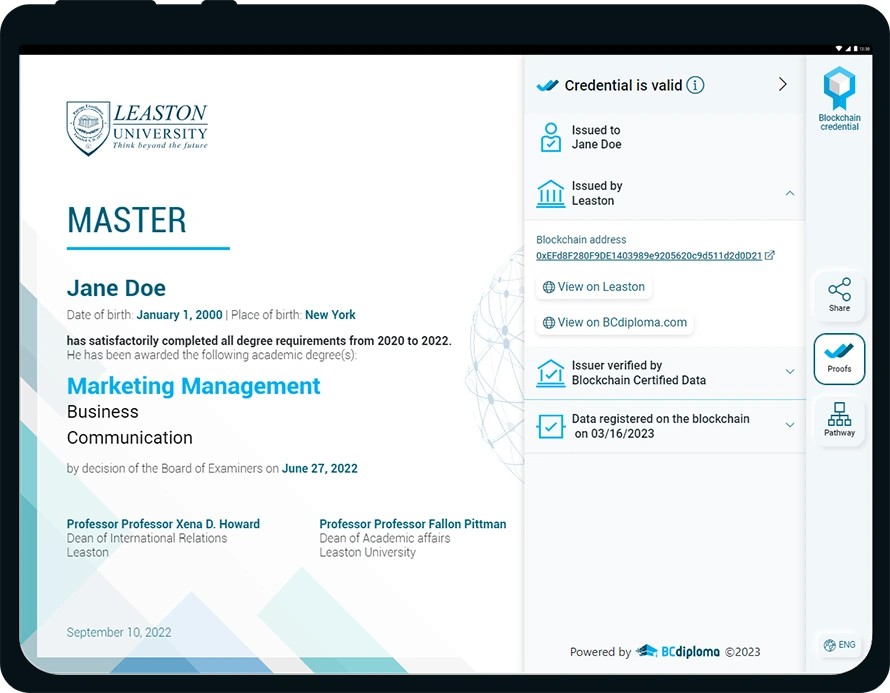If you are reading this article, you probably already have a good knowledge of the Digital Credentials ecosystem. And you may be thinking that Credly, Accredible or BCdiploma provide the same service, which is to issue trustworthy digital credentials. But do you know what you are trusting and what is the purpose of the platform you are using?
In this article, we will introduce you to BCdiploma’s vision and know-how: Brace yourselves, we are changing the paradigm.
Authenticity of certificates: verifiable or contextual?
In the case of the best-known centralized credentialing services, the promise to authenticity comes from the trust given to the platform: the brand is well-known, the customer already trusts it, etc. Their service is developed and operated from databases, offering by default access to credentials on their own platform. What proof of authenticity is left if we want to verify the credential outside the centralized service platform, in a neutral context?
To overcome this problem, some add a “blockchain option” to their credentials, which is often misunderstood: this means storing a proof (called a fingerprint or hash) on a blockchain in order to assert by comparison that the credential is authentic. The result: the service depends on the information kept by the platform at the time of verification, which is difficult to perform alone. In short, we are facing the classic risk of lock-in effect of SaaS products: no durability or independence from the credentialing platform.
Let’s move from web 2 to web 3, or from contextual authenticity, dependent on the servers of your credentialing platform, to verifiable authenticity.
The BCdiploma trust environment is based on the blockchain address of the institution issuing the diplomas and certificates

To guarantee the verifiability of a digital certificate, BCdiploma has developed, patented and implemented a web 3 ecosystem based on simple precepts:
- Step 1: The institution’s entitlement to use its blockchain address is created, managed and publicly accessible in a smartcontract on the blockchain. This smartcontract associates the institution’s proof of existence and identity verification with its blockchain address.
- Step 2: The data of a certificate is written on the blockchain by the institution itself, and can be verified with only one click via an independent tool.
- Step 3: All data viewed online is read in real-time from a blockchain, not from a database: thus, no verification operation is required when viewing it.
The level of trust offered by BCdiploma is based on the traceability and authenticity of the information consulted. This allows institutions to use the solution as a white label, integrating diplomas and certificates directly into their own website. Thus, trust comes from the transparency and reliability of the data, rather than from BCdiploma itself, providing a solid and reassuring foundation for all institutions and stakeholders involved.
Durability and independence guaranteed with BCdiploma
This type of promise is hard to believe when you are used to centralized providers, but it’s the one BCdiploma implements: credential data remains available independently of BCdiploma, by design and with no time limit.
Does this sound complex? Ask us for a demo and you will see that it is totally transparent and of immediate use, as much for the institution as for a student or a recruiter.
That’s why TOEIC and more than 170 institutions in over 21 countries are already using BCdiploma, which has become the world’s largest blockchain environment.
[title[BCdiploma: Redefining Trust in Digital Credentials with Blockchain]] [description[In this article, we will introduce you to BCdiploma’s vision and know-how: Brace yourselves, we are changing the paradigm.]]